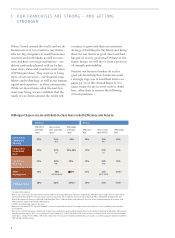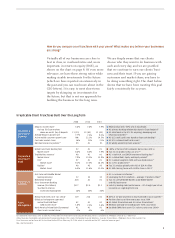JP Morgan Chase 2015 Annual Report Download - page 20
Download and view the complete annual report
Please find page 20 of the 2015 JP Morgan Chase annual report below. You can navigate through the pages in the report by either clicking on the pages listed below, or by using the keyword search tool below to find specific information within the annual report.-
 1
1 -
 2
2 -
 3
3 -
 4
4 -
 5
5 -
 6
6 -
 7
7 -
 8
8 -
 9
9 -
 10
10 -
 11
11 -
 12
12 -
 13
13 -
 14
14 -
 15
15 -
 16
16 -
 17
17 -
 18
18 -
 19
19 -
 20
20 -
 21
21 -
 22
22 -
 23
23 -
 24
24 -
 25
25 -
 26
26 -
 27
27 -
 28
28 -
 29
29 -
 30
30 -
 31
31 -
 32
32 -
 33
33 -
 34
34 -
 35
35 -
 36
36 -
 37
37 -
 38
38 -
 39
39 -
 40
40 -
 41
41 -
 42
42 -
 43
43 -
 44
44 -
 45
45 -
 46
46 -
 47
47 -
 48
48 -
 49
49 -
 50
50 -
 51
51 -
 52
52 -
 53
53 -
 54
54 -
 55
55 -
 56
56 -
 57
57 -
 58
58 -
 59
59 -
 60
60 -
 61
61 -
 62
62 -
 63
63 -
 64
64 -
 65
65 -
 66
66 -
 67
67 -
 68
68 -
 69
69 -
 70
70 -
 71
71 -
 72
72 -
 73
73 -
 74
74 -
 75
75 -
 76
76 -
 77
77 -
 78
78 -
 79
79 -
 80
80 -
 81
81 -
 82
82 -
 83
83 -
 84
84 -
 85
85 -
 86
86 -
 87
87 -
 88
88 -
 89
89 -
 90
90 -
 91
91 -
 92
92 -
 93
93 -
 94
94 -
 95
95 -
 96
96 -
 97
97 -
 98
98 -
 99
99 -
 100
100 -
 101
101 -
 102
102 -
 103
103 -
 104
104 -
 105
105 -
 106
106 -
 107
107 -
 108
108 -
 109
109 -
 110
110 -
 111
111 -
 112
112 -
 113
113 -
 114
114 -
 115
115 -
 116
116 -
 117
117 -
 118
118 -
 119
119 -
 120
120 -
 121
121 -
 122
122 -
 123
123 -
 124
124 -
 125
125 -
 126
126 -
 127
127 -
 128
128 -
 129
129 -
 130
130 -
 131
131 -
 132
132 -
 133
133 -
 134
134 -
 135
135 -
 136
136 -
 137
137 -
 138
138 -
 139
139 -
 140
140 -
 141
141 -
 142
142 -
 143
143 -
 144
144 -
 145
145 -
 146
146 -
 147
147 -
 148
148 -
 149
149 -
 150
150 -
 151
151 -
 152
152 -
 153
153 -
 154
154 -
 155
155 -
 156
156 -
 157
157 -
 158
158 -
 159
159 -
 160
160 -
 161
161 -
 162
162 -
 163
163 -
 164
164 -
 165
165 -
 166
166 -
 167
167 -
 168
168 -
 169
169 -
 170
170 -
 171
171 -
 172
172 -
 173
173 -
 174
174 -
 175
175 -
 176
176 -
 177
177 -
 178
178 -
 179
179 -
 180
180 -
 181
181 -
 182
182 -
 183
183 -
 184
184 -
 185
185 -
 186
186 -
 187
187 -
 188
188 -
 189
189 -
 190
190 -
 191
191 -
 192
192 -
 193
193 -
 194
194 -
 195
195 -
 196
196 -
 197
197 -
 198
198 -
 199
199 -
 200
200 -
 201
201 -
 202
202 -
 203
203 -
 204
204 -
 205
205 -
 206
206 -
 207
207 -
 208
208 -
 209
209 -
 210
210 -
 211
211 -
 212
212 -
 213
213 -
 214
214 -
 215
215 -
 216
216 -
 217
217 -
 218
218 -
 219
219 -
 220
220 -
 221
221 -
 222
222 -
 223
223 -
 224
224 -
 225
225 -
 226
226 -
 227
227 -
 228
228 -
 229
229 -
 230
230 -
 231
231 -
 232
232 -
 233
233 -
 234
234 -
 235
235 -
 236
236 -
 237
237 -
 238
238 -
 239
239 -
 240
240 -
 241
241 -
 242
242 -
 243
243 -
 244
244 -
 245
245 -
 246
246 -
 247
247 -
 248
248 -
 249
249 -
 250
250 -
 251
251 -
 252
252 -
 253
253 -
 254
254 -
 255
255 -
 256
256 -
 257
257 -
 258
258 -
 259
259 -
 260
260 -
 261
261 -
 262
262 -
 263
263 -
 264
264 -
 265
265 -
 266
266 -
 267
267 -
 268
268 -
 269
269 -
 270
270 -
 271
271 -
 272
272 -
 273
273 -
 274
274 -
 275
275 -
 276
276 -
 277
277 -
 278
278 -
 279
279 -
 280
280 -
 281
281 -
 282
282 -
 283
283 -
 284
284 -
 285
285 -
 286
286 -
 287
287 -
 288
288 -
 289
289 -
 290
290 -
 291
291 -
 292
292 -
 293
293 -
 294
294 -
 295
295 -
 296
296 -
 297
297 -
 298
298 -
 299
299 -
 300
300 -
 301
301 -
 302
302 -
 303
303 -
 304
304 -
 305
305 -
 306
306 -
 307
307 -
 308
308 -
 309
309 -
 310
310 -
 311
311 -
 312
312 -
 313
313 -
 314
314 -
 315
315 -
 316
316 -
 317
317 -
 318
318 -
 319
319 -
 320
320 -
 321
321 -
 322
322 -
 323
323 -
 324
324 -
 325
325 -
 326
326 -
 327
327 -
 328
328 -
 329
329 -
 330
330 -
 331
331 -
 332
332
 |
 |

1818
happen, but if it did, we could easily handle
it. We manage our growth in China to try to
capture the long-term value (and, remember,
this will help a lot of our businesses outside of
China, too) and in a way that would enable us
to handle bad, unexpected outcomes. We don’t
mind having a bad quarter or two, but we will
not risk our company on any country. This is
how we manage in all countries in which we
have material activity.
Brazil. Brazil has had a deteriorating
economy, shrinking by 3%–4% over the last
year. In addition, as I write this letter, Brazil
faces political upheaval as its president is
being threatened with impeachment and its
former president is being indicted. Yet the
country has a strong judicial system, many
well-run companies, impressive universities,
peaceful neighbors and an enormous quan-
tity of natural resources. In Brazil, we have
banking relationships with more than 2,000
clients, approximately 450 multinational
corporations going into Brazil to do business
and approximately 50 Brazilian companies
going outbound. Our publicly disclosed expo-
sure to Brazil is approximately $11 billion,
but we think that in extreme stress, we might
lose $2 billion. In each of the last three years,
we actually have made money in Brazil. We
are not retreating – because the long-term
prospects are probably fine – and for decades
to come, Brazilians will appreciate our stead-
fastness when they most needed it.
Argentina. Argentina is now a country
with incredible opportunity. In the 1920s,
its GDP per person was larger than that
of France, whereas today, it is barely one-
third compared with France. Argentina is
an example of terrible public policy, often
adopted under the auspices of being good
for the people, that has resulted in extraordi-
nary damage to the economy. However, the
country has a highly educated population, a
new president who is making bold and intel-
ligent moves, peaceful neighbors and, like
Brazil, an abundance of natural resources.
You might be surprised to know that for
the past 10 years, in spite of the country’s
diculties, JPMorgan Chase has made a
modest profit there by consistently serving
our clients and the country. This year, we
took a little additional risk in Argentina
with a special financing to help bring the
country some stability and help get it back
into the global markets. We are hoping that
Argentina can be an example to the world of
what can happen when a country has a good
leader who adopts good policy.
To give you more comfort, I want to remind
you that throughout all the international
crises over the last decade, we maintained
our businesses in many places that were
under stress – such as Spain, Italy, Greece,
Egypt, Portugal and Ireland. In almost every
case, we did not have any material prob-
lems, and we are able to navigate every
issue and continue to serve all our clients.
Again, we hope this will put us in good
stead in these countries for decades. Later in
this letter, I will talk about another poten-
tially serious issue – Britain possibly leaving
the European Union.
How do you manage your interest rate exposure? Are you worried about negative interest rates
and the growing dierences across countries?
No, we are not worried about negative
interest rates in the United States. For years,
this country has had fairly consistent job
growth and increasingly strong consumers
(home prices are up, and the consumer
balance sheet is in the best shape it’s ever
been in). Housing is in short supply, and
household formation is going up, car sales are
at record levels, and we see that consumers
are spending the gas dividend. Companies
are financially sound – while some segments’
profits are down, companies have plenty of
cash. Nor are we worried about the diverging
interest rate policies around the world. While
they are a reasonable cause for concern, it
